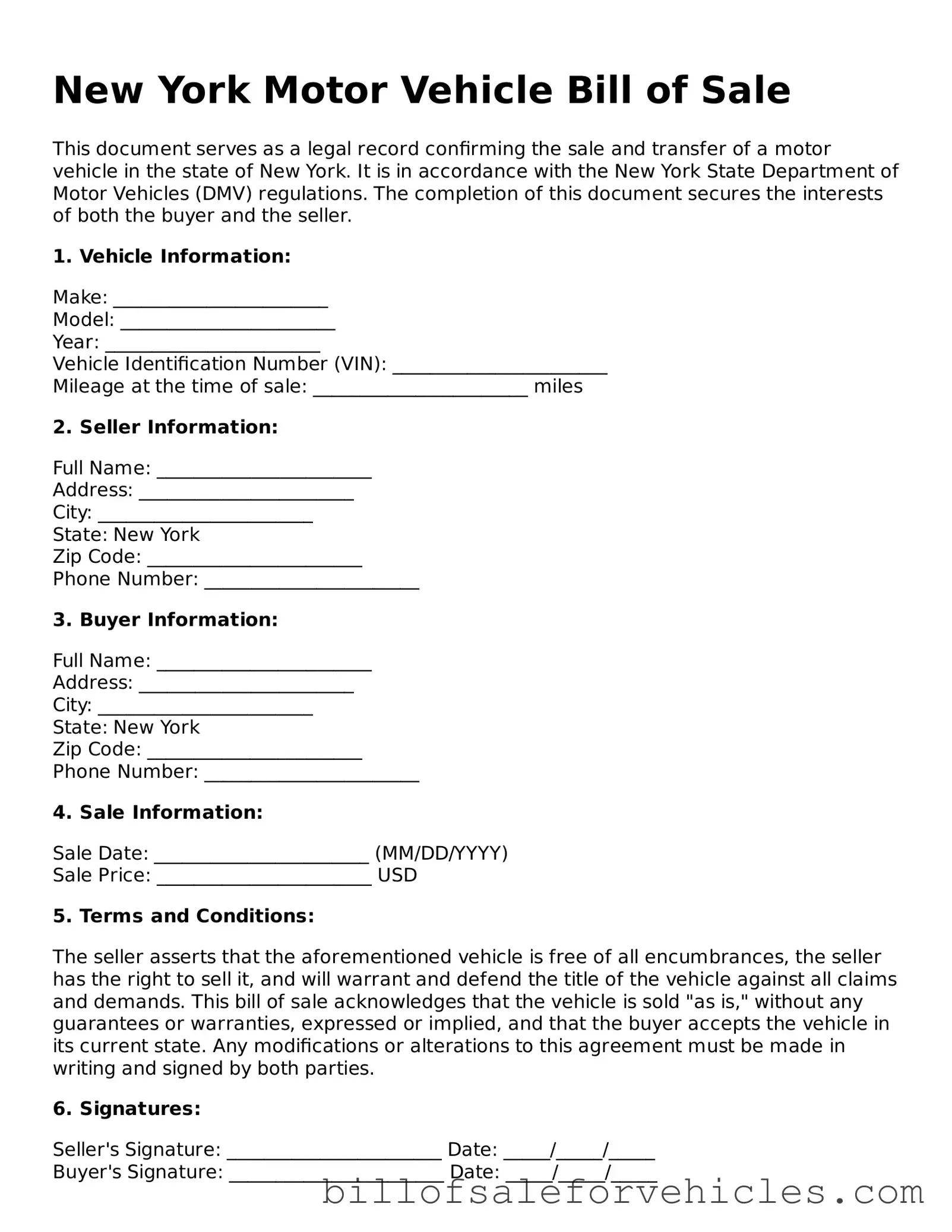What is a New York Motor Vehicle Bill of Sale?
A New York Motor Vehicle Bill of Sale is a legally binding document that records the sale and purchase of a motor vehicle in the state of New York. It evidences the transfer of ownership from the seller to the buyer and contains vital information such as the make, model, year, and VIN of the vehicle, as well as the names and signatures of both parties involved in the transaction.
Why do I need a Motor Vehicle Bill of Sale in New York?
In New York, a Motor Vehicle Bill of Sale is a crucial document for both the buyer and seller. For the seller, it serves as proof of relinquishing ownership of the vehicle. For the buyer, it is necessary for legal registration and titling of the vehicle in their name. Moreover, this document provides both parties with a record of the sale, which can be invaluable in the case of future disputes or for tax purposes.
What information is required on a New York Motor Vehicle Bill of Sale?
The Bill of Sale should include the vehicle's make, model, year, Vehicle Identification Number (VIN), the sale date, and the sale price. It also needs to contain the printed names, addresses, and signatures of both the buyer and the seller. Some forms might also require notarization to further authenticate the document.
Does New York require the Motor Vehicle Bill of Sale to be notarized?
While notarization is not always a requirement in New York, having the Motor Vehicle Bill of Sale notarized can add an extra layer of authenticity to the document. This can be particularly helpful if any legal issues arise from the sale of the vehicle. It is advisable to check current regulations or consult with a legal expert to determine if this step is necessary for your specific situation.
How does the Motor Vehicle Bill of Sale protect the buyer?
For the buyer, the Motor Vehicle Bill of Sale serves as proof of ownership until the vehicle's title is officially transferred. It also provides evidence of the transaction, detailing the agreed-upon sale price and the condition of the vehicle at the time of sale, protecting the buyer from potential fraud or disputes over the terms of the sale.
How does the Motor Vehicle Bill of Sale protect the seller?
The seller benefits from the Bill of Sale as it provides a documented release of ownership and liability of the vehicle. By recording the transaction in writing and obtaining the buyer's acknowledgment, the seller can help prevent future claims or liabilities associated with the vehicle after the sale.
Where can I obtain a New York Motor Vehicle Bill of Sale form?
The New York Department of Motor Vehicles (DMV) provides Motor Vehicle Bill of Sale forms. These forms can also be found online through legal resources or the DMV website. It's important to ensure that any form used complies with New York state requirements.
What should I do with the Motor Vehicle Bill of Sale after the sale?
After the sale, both the buyer and seller should keep a copy of the fully executed Motor Vehicle Bill of Sale for their records. The buyer will need the document for vehicle registration and titling, while the seller should retain it to prove the transfer of ownership. It's recommended to keep the document for at least a few years in case any legal issues arise.
